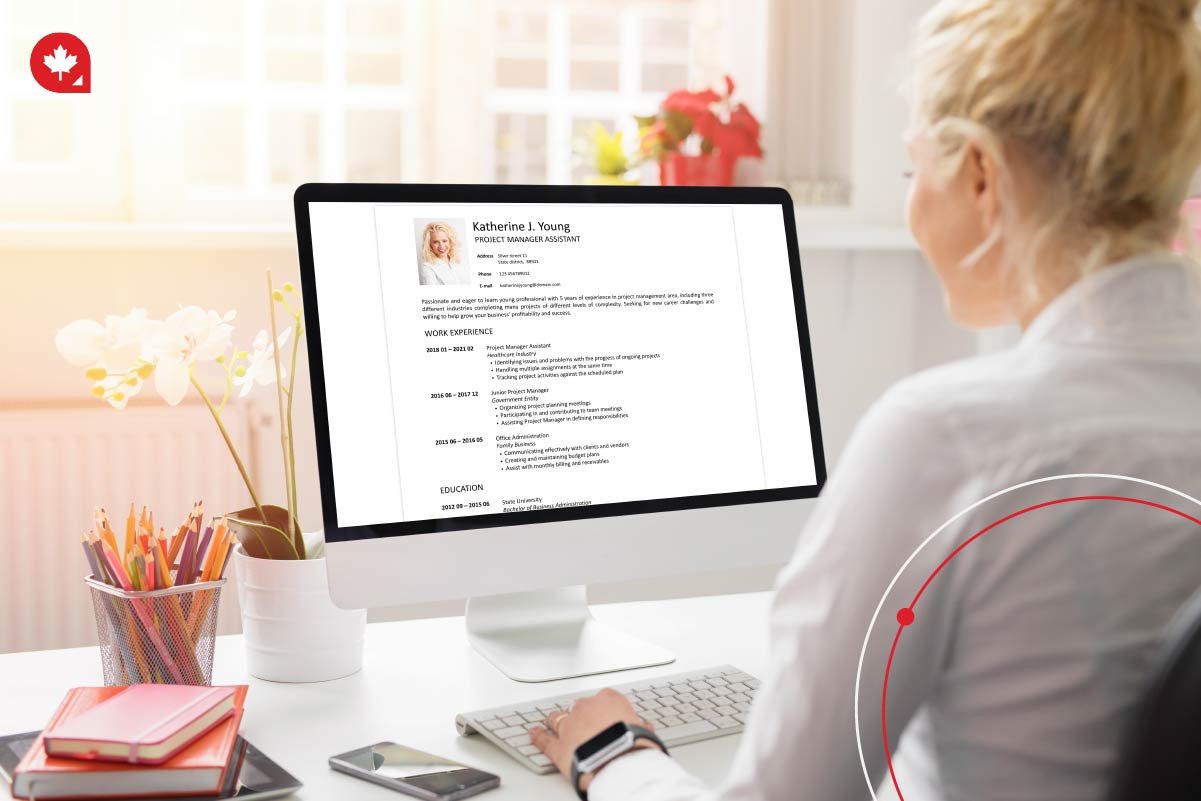So you've decided to embark on a new chapter in the Great White North. And with a new setting comes that new job. Fortunately, nearly one million Canada jobs are just waiting to be filled. But before you break out your briefcase, you'll have to go through the process of applying for a job. When you apply for jobs in Canada, you must submit your Curriculum Vitae (CV), which summarizes your work experience, skills, and other career and personal information. This article gives you a breakdown of how to write the perfect CV for work in Canada.
Finding a Job in Canada as a Newcomer

When looking for your ideal job in Canada, you'll find that vacancies are spread across sectors in this second-largest country in the world. With ongoing labor shortages due to a large retiring population and low birth rate, there is a huge demand for foreign workers - skilled, semi-skilled, and low-or unskilled. To find vacancies, You can browse several job sites. These include the following:
- Job Bank
- Indeed Canada
- Talent.com
- Glassdoor
The Difference Between a CV and a Resume
If you're a bit confused about whether you'll need a CV or resume for applications for Canada jobs, here's what you need to know:
- Both of these are used to showcase professional work experience
- In Canada, CVs are used primarily only for academic positions, fellowships, grants, postdoctoral positions, teaching or research positions, or high-level positions
- Most other positions in Canada require a resume
- CVs are usually around two pages long, while a resume is relatively short
- A CV will usually give more detail on your experience, education, skills, publications, awards, research, etc. A resume, on the other hand, is made up of a summary of work experience, education, and skills relevant to the role
How to Write the Perfect CV for Work in Canada

Not sure how to go about writing the perfect CV? Then follow these steps below.
Step 1 - Be Truthful
Do not lie or embellish your CV. Your Canadian employer will double-check the important facts you have listed on your application. This does not mean that you cannot list your achievements. Keep to the facts and provide dates, documents, or other evidence to support your claims.
If you are caught lying about your qualifications, your visa application could be rejected by the Immigration office. This could lead to a five-year ban, which means you won't be able to apply for any Canadian immigration program.
Step 2 - Choose a Clear Layout
The layout is critical, so ensure your CV is arranged neatly. Choose a reader-friendly font like Lato or Arial. Also, make sure that you make your font at least size 11, as your recruiter may not enjoy having to squint while reading your CV.
Spacing is also important. This helps your reader go through your CV with ease. Consider 1.15 line spacing for a great layout of information.
Also, ensure your CV has clear headings to break it down into easily readable bits. Headings you can use are:
- Education
- Experience
- About Me
- Skills
- Languages
- Contact Information
- Achievements
- References
Note: The use of graphs or other images can also help break down an otherwise boring CV into something exciting. But don't forcibly add them if they don't work with your information.
Step 3 - Choose a Great CV Design
Choose your CV design wisely. There are many different CV designs and templates to work with, but ensure that your CV design matches your job. For example, choose a more classic design if you have a more serious occupation like an administrator. However, if you belong to a more creative profession, your CV aesthetic can showcase this.
Step 4 - Ensure you have clear contact details on your CV
Recruiters hate having to try and contact an applicant only to realize that they have neglected to leave their contact information. So if they cannot locate your information or contact you, they'll simply skip your CV, and you'll lose out on that job in Canada.
Also, make sure that your address is professional sounding. An inappropriate-sounding email address may leave a lasting bad impression.
Additionally, always double-check your contact information to make sure there are no mistakes and that you have your latest physical address on your CV.
Step 5 - Keep it Short, Clear, and Concise
Most of the time, recruiters prefer that your CV should be at most two pages. Yes, that may seem short. But imagine it this way: A Canadian company human resources manager may get over 200 applicants for one job position and probably has learned how to skim over information to find the right candidate quickly. You may have written a fantastic background of your work experience, but the HR may only spend 30 seconds skimming your CV before moving on. So keep it short and simple, highlighting the most important information.
Step 6 - List Your Educational Qualifications
Your educational qualifications should be listed from high school onwards. You can add any certificates, degrees, diplomas, or other qualifications you have received. You could scan these documents for a more professional touch and then create links on your CV. So when potential interviewers open your CV, they can verify your qualifications. You may also need an Educational Credential Assessment (ECA), to verify your qualifications.
Step 7 - Update Your Work Experience
Remember, the whole point of a CV is to provide a summary of your work experience. Make sure you add your most recent work experience at the top of your list. Then move on to the least recent jobs. This is to keep the attention of your potential employer. If you have all the relevant information at the bottom of the page, they are less likely to read it all and rather skip over you as an unsuitable candidate.
Always remember that your CV is designed to be easy to read and user-friendly to whoever reads it.
If you don't have work experience, learn more about how to move to Canada without work experience.
Step 8 - Add References
Prospective employers and recruiters will want at least three contactable references to contact should you be up for consideration for the position you applied to. So list appropriate individuals who can vouch for your skills and character. You can include a former employer, line manager, supervisor, or even lecturer if you are a recent graduate. It's a good idea to inform anyone you list as a reference that you are adding them to avoid surprises when they receive a call from a recruiter.
Step 9 - Highlight Your Ability to be a Team Player
While companies review your CV to learn more about you, you should also remember that in the grand scheme of things, companies want to hire people that work well within a team. It's a good idea to demonstrate your ability to work as a team player by mentioning areas in which you have do so.
Step 10 - Double Check the Document
Before sending your CV and accompanying documents to a hiring Canadian company, have some of your friends or relatives read over them to double-check your spelling and grammar. You can hire an editor to professionally check your CV and cover letter to avoid embarrassing mistakes that could hinder your success.
Note: If you are applying for a Canadian job, make sure that your application is either in French or English by hiring a professional translator.
Get Ready to Work in Canada

Now that you know which jobs in Canada require the submission of a CV and how to put together the perfect one, you can take the time to either update the CV you already have or produce a flawless one from scratch. Remember to be honest and accurate when noting down your qualifications and experience, pay attention to the layout and design of the document, add your contactable references, and make sure that all the boxes are ticked once your CV is complete. Having the best possible CV will help you stand the best chance of landing your ideal job at a Canadian company.
Need help getting ready to work in Canada? Then reach out to one of our Regulated Canadian Immigration Consultants, standing by to get you on your way to a job amongst the maple leaves.
FAQs
What Types of Resumes Are Used in Canada?
There are three types of resume people use to apply for jobs in Canada:
- A Reverse chronological resume outlines your work experience in reverse chronological order, so you would list your most recent experience first. This is the most popular type of resume in Canada.
- A Functional resume highlights all your skills and qualifications instead of just certain experiences. You would still include your work history, but it will appear after your skills and academic history.
- A Hybrid resume combines the two resumes mentioned above. It is perfect for anyone wishing to highlight transferable skills and professional experience. Work experience is usually displayed in a reverse chronological format, and the skills section includes a summary of qualifications and technical abilities.
Do I Need to Write a Cover Letter to Submit With my CV or Resume?
Yes, you should. This is the perfect opportunity to grab the recruiter's attention and sell your skills. Here, you'll introduce yourself and provide some information on your employment history. Most importantly, it's a great place to tell the recruiter how you will add value to the company hiring.




